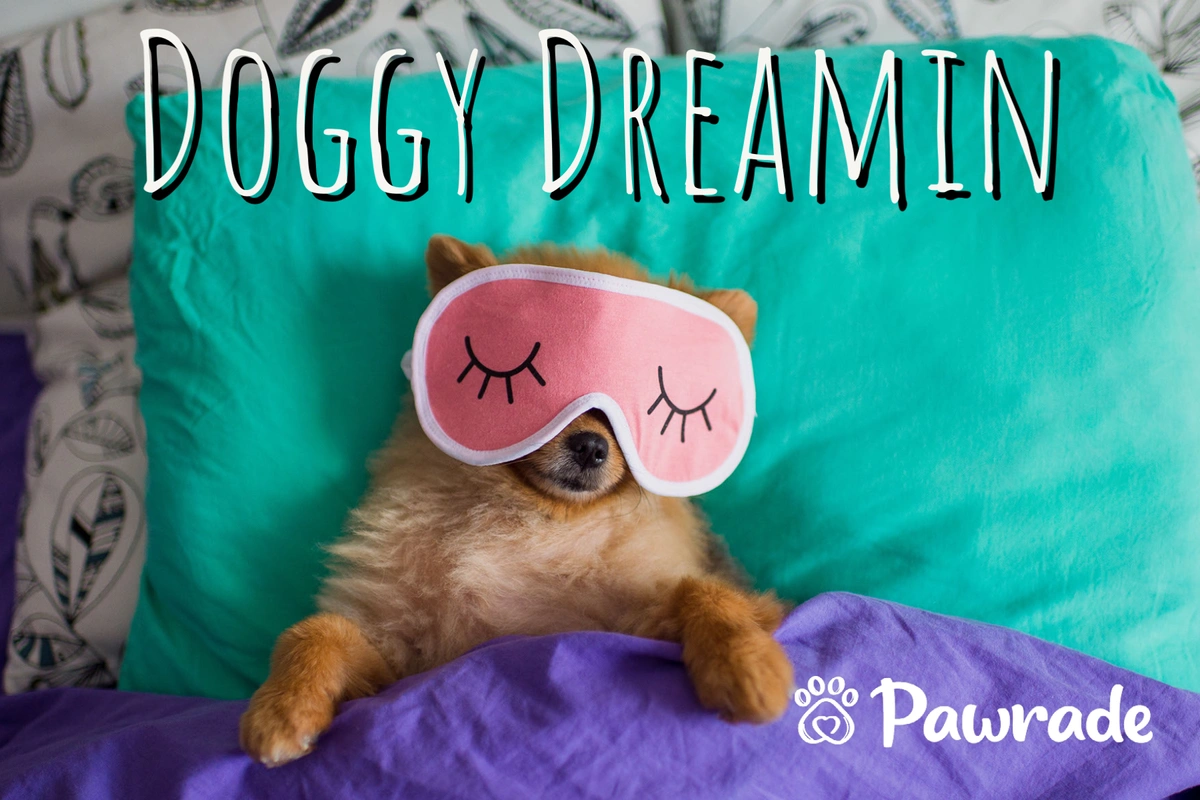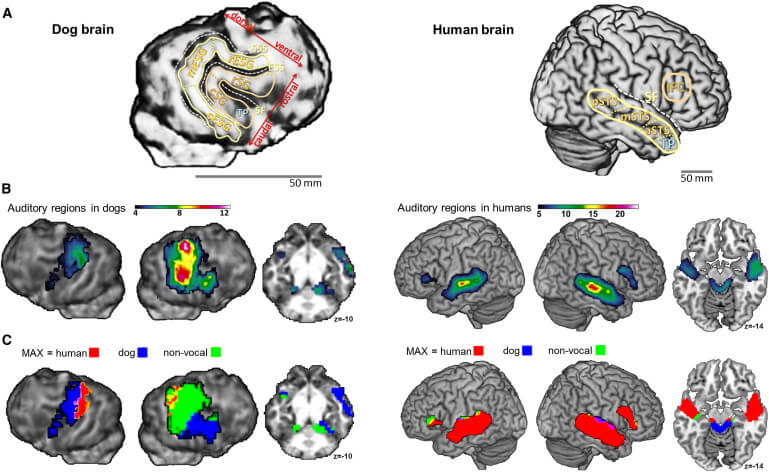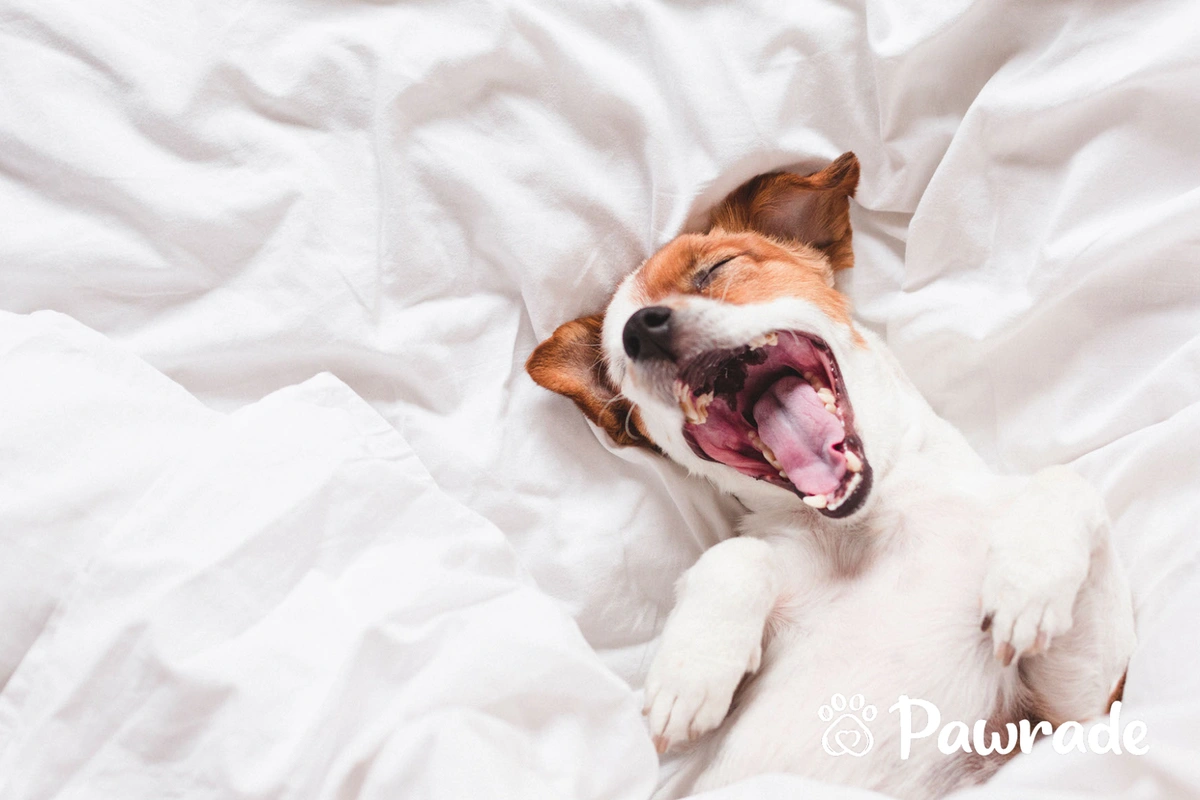Wouldn't you love to spend a day in the mind of your dog? No bills to worry about. Simple things like squirrels would fascinate you. The smell of dinner around the house would be more than 10,000 times stronger. And better yet, you would get to sleep in!
Speaking of which, an amusing sight to see is your dog making sounds and movements while sleeping. You may have heard soft barks or "yips" similar to how humans talk in their sleep. Or you may have seen your dog's tail wag, legs move, and ears twitch. Just like humans, dogs can dream during the rapid eye movement (REM) stage of sleep.
Even though the content of their dreams is a mystery to us people, scientists have speculated that because dogs spend so much time around us observing our behavior, it’s likely that dogs' dreams include events from their daily lives such as going for walks or playing with their owners. They may dream about their favorite toys or activities, or they may also have nightmares tied to stressful events.
How Much Sleep Does a Dog Need to Dream?
On average, adult dogs need about 12-14 hours of sleep per day and puppies typically require even more – up to 18 hours! Dogs enter the REM stage multiple times throughout a day's sleeping cycle. The circadian rhythm plays an important role in regulating dogs' bodies and helps determine when they should sleep and wake up each day. This internal clock reacts to natural light cycles which can cause slight variations in a dog's sleeping patterns depending on seasonal changes or when daylight savings occurs. Overall, most dogs will still maintain relatively regular habits when it comes to going to bed and waking up each morning.
Human v. Canine Brain Anatomy
The brain is arguably the most complex organ in existence. While the human brain and canine brain have similarities, they also maintain a number of unique differences such as size, structure, and functions.
The cerebrum
On average, an adult human brain weighs around 1400g while a canine brain only weighs up to 40g. The different brain sizes also bring about other structural differences. One example of this is the cerebrum region (the largest part of our brains) is about five times larger than that of a typical dog’s cerebrum. This is not surprising since the cerebrum is responsible for speech, judgment, thinking and reasoning, problem-solving, emotions, and learning. Similarly, humans have a larger hippocampus which allows us to store longer-term memories better than dogs can.
The cortex
Another way our brains differ is a dog's cortex region (the outer layer responsible for cognition) is relatively thicker compared to its human counterpart – 2-3 millimeters thick compared to 1-2 millimeters thick for humans. This difference can be attributed to evolution as well as other factors such as diet, lifestyle, and overall body size. It may well be that dogs have thicker cortexes due to their need to keep more sensory information available at any given moment than humans do.
Most experts agree that dogs lack conscious thought processes similar to those seen in humans; instead, their cognitive abilities focus mainly on instinctive responses and short-term memory capabilities. Humans possess "higher-order" thinking skills such as problem-solving and language processing capabilities in their minds (such as understanding grammar), which isn’t as present in dogs and most likely never will be due to its complexity being out of reach for them biologically speaking although dogs' smelling and hearing abilities are heightened compared to a human's.
In the picture below, you can see how the auditory regions in a canine brain have increased levels of activity. From an evolutionary standpoint, this development could be geared towards the canine communication process and also serve survival purposes such as hunting food or avoiding danger.
Andics et al., 2014: Voice-Sensitive Regions in the Dog and Human Brain Are Revealed by Comparative fMRI
How Does a Dog's Brain Activity Affect Its Dreams?
Since the size of a brain region dictates the number of neuron connections allowed, this consequently determines the amount of activity that can be achieved within a brain region. There is no empirical evidence to back up this theory, but humans may have dreams that are more complex than dogs. Considering the human ability to reason, behave in a highly intricate social network, and perceive ego within the realm of a "subconscious," it is reasonable to imagine that a human has the capacity to dream in extraordinary ways compared to a dog.
Your dreams can create the vision of a person that you have never met before. Your dreams can compile many different thoughts and experiences to generate brand-new situations. You may have also experienced reoccurring dreams that are open for interpretation.
On the flip side, because your dog's experiences are seemingly simpler (fewer social engagements, fewer stresses and emotional stimuli, fewer decisions to be made), the dreams it has could also be simplified. Doctor Stanley Coren, a notable neuropsychological researcher of dogs, has developed the belief that dogs dream about "common dog activities." While a dog's memory is still sharp and long-lasting, the entirety of its daily experience is not as convoluted as a human being's. This being said, their dreams may be more basic than what we experience.
Either way, the brain never sleeps even when we do! Our perception of the world around us is shaped by our conscious experiences, but also by subconscious activities like dreaming. Studying brain activity during dreaming gives researchers a better understanding of how certain parts of the brain are involved in forming memories, making connections between emotions and situations, and helping us make sense of our day-to-day lives. As we explore the relationship between how a dog dreams and how a human dreams, it becomes clear that brains still function similarly when it comes to dreaming.
Brains of Different Dog Breeds
You may be wondering if your Siberian Husky puppy dreams of adventuring the Alaskan tundra or if your Australian Shepherd puppy dreams of roaming rural ranches while herding cattle. As mentioned above, the belief is that dogs dream about the occurrences of their lives just as people do; there is no identifiable distinction between the dreams of different breeds.
What is interesting though, is the hypothesis that smaller dog breeds may have shorter yet more frequent dreams than larger breeds. For reasons unknown, small dogs show a pattern of a 1-minute dream every 10 minutes while large dogs can have 5-10 minute dreams every hour. Maybe it is because of the earlier idea that different brain sizes could create different levels of intensity while dreaming. Another plausible idea is that the amount of stimulation your pet dog gets during the day will heavily impact the quality (and quantity) of its dreaming activity too!
Dreamland remains a mystery, but it sure is a fun place to remain curious about. Despite being such an open-ended topic, researchers are finding new questions to ask with access to new technologies available today. As scanning devices (eg. fMRIs and EEGs) continue to improve, they offer deeper levels of understanding about dreams and their effects on our mental well-being.
Scientists will likely discover even more fascinating insights to open up exciting possibilities for the future of dream and sleep studies. Studies will also likely focus on how diet, exercise, and lifestyle choices can influence someone's ability to achieve restorative sleep with meaningful dreams. Additionally, research involving lucid dreaming or out-of-body experiences could provide further insights into the dream process in dogs and humans alike.
Find Your Next Cuddle Buddy
If you have always dreamed of adopting a puppy, then you found the right place! Pawrade makes it easier than ever before to make your dream come true. We understand that finding the perfect pup for you may seem daunting, so we make sure to provide as much information as possible about each breed in our lineup.
From size, health issues and temperament, to grooming needs and exercise requirements – we provide a detailed overview of each breed so that you can make an informed decision. We also take great pride in showcasing some of the most adorable puppies for sale on the market, which are sure to warm your heart and bring joy into your home. Good luck just choosing one! Whether you are daydreaming about your furever friend or dreaming the night away about bringing home your perfect pup, let Pawrade help you start the adventure.




